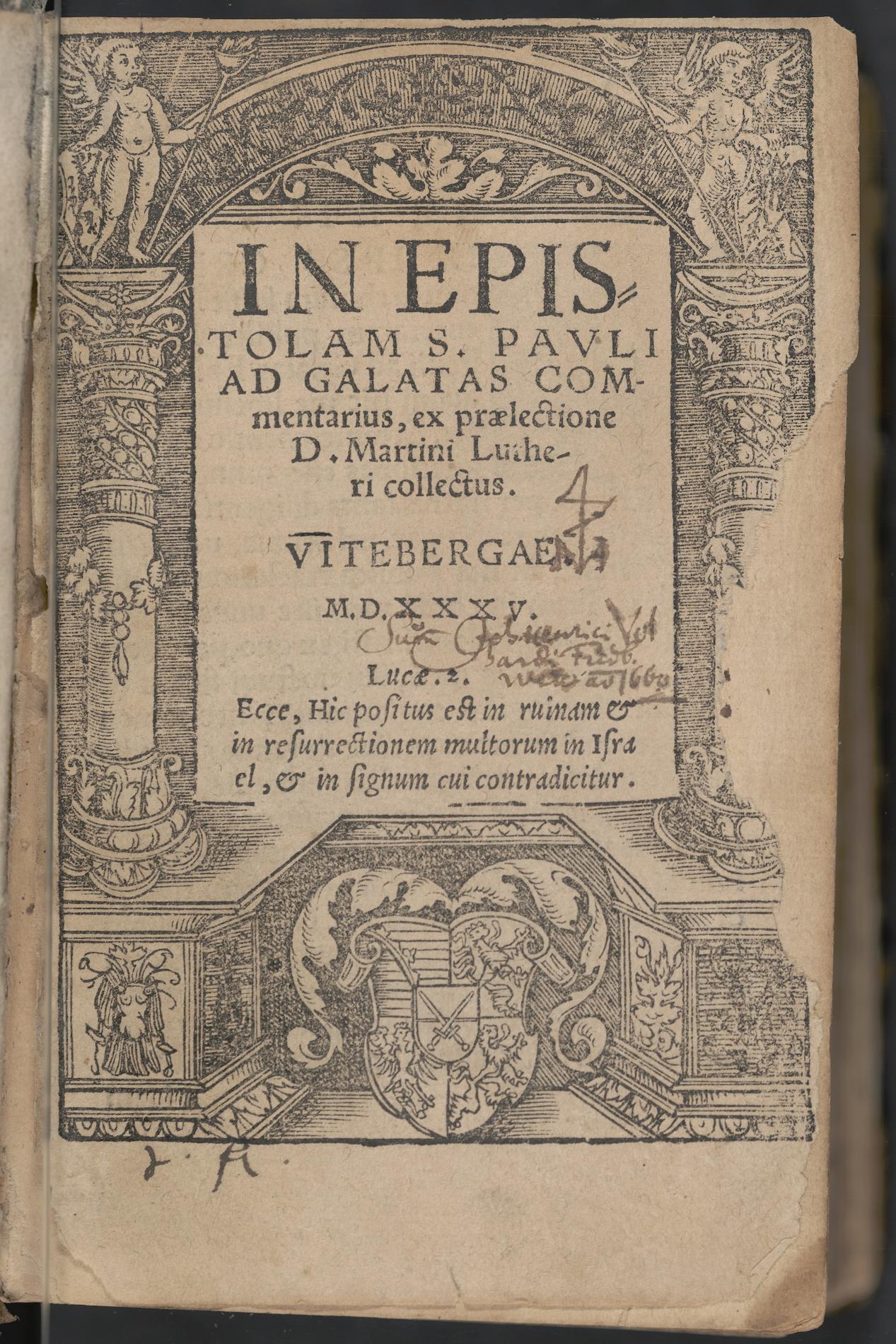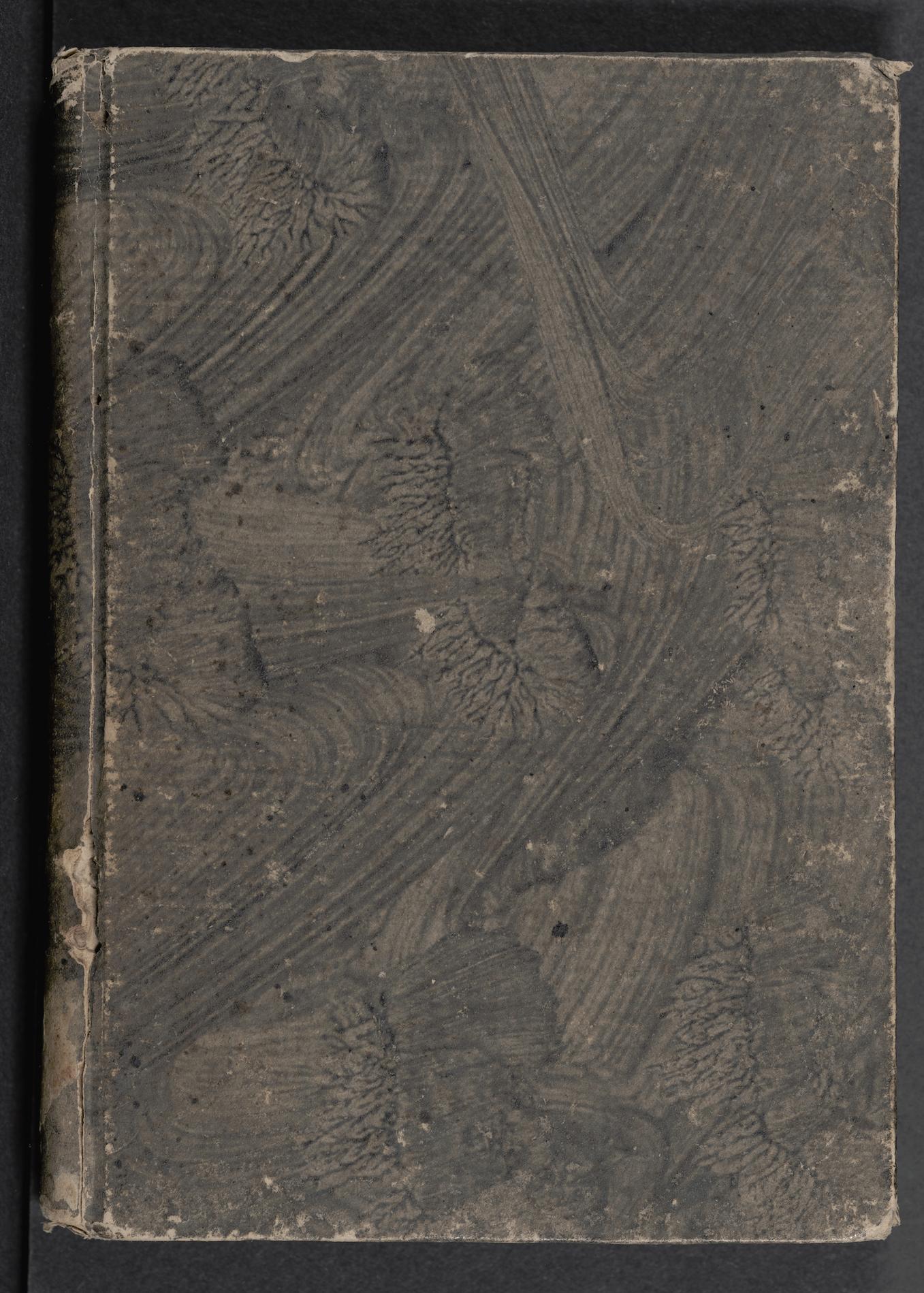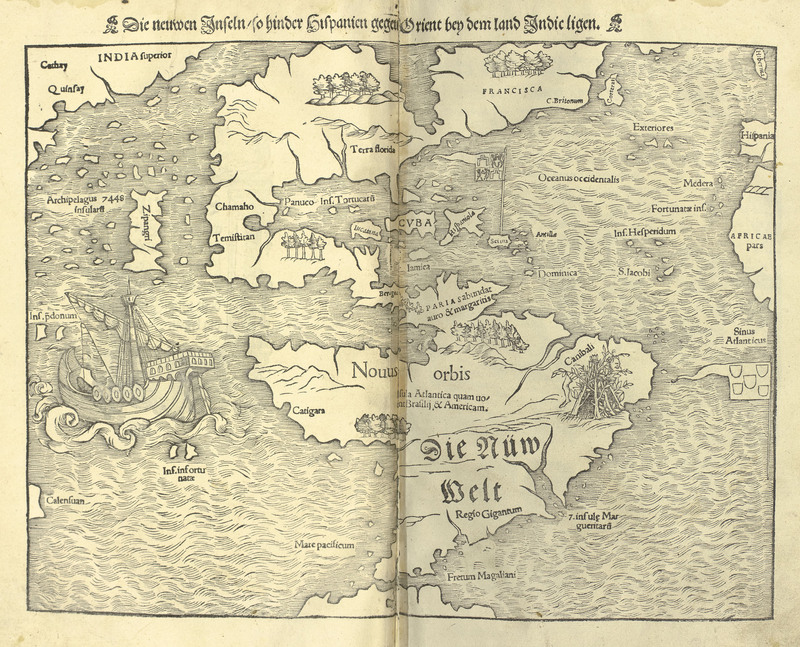Richard C. Kessler Reformation Collection
The Richard C. Kessler Reformation Collection was established in 1987, when Richard and Martha Kessler donated their private collection of Reformation imprints and manuscripts to Emory University. These materials were combined with Reformation holdings at the Pitts Theology Library, and an effort was launched to enlarge and sustain this collection in the years to come. An advisory committee of Lutheran laypersons and clergy and of Candler School of Theology faculty and administrators oversees the nurture of the collection and its programs. The Reformation Notes newsletter provides semiannual updates on the growth of the collection, and the Reformation Day at Emory program of music and lectures each October celebrates the collection and its contributions to music, history, and theology. In the sixteenth century the social and theological movements of central Europe, known collectively as the Reformation, critically shaped religion, law, education and other institutions in the West, and their long shadow has extended even to the present. The purpose of the Kessler Collection is to document these changes by collecting print and manuscript materials down to 1570 by Martin Luther (1483-1546) and those whom he influenced or engaged in debate. In this way historians and theologians will be able to hear the full range of voices that were raised in this dynamic period. The holdings of the collection now exceed 4,000 items, a mark approximated by only two other libraries in North America; no American library approaches the Kessler Collection's 1,000+ publications by Luther himself.
-
 Text
TextBekentnusz Thomas Mu[n]tzers etwa Pfarner zu Alsted, vnd ytzt yn dem auffrürische[n] Hauffen zu Francke[n]hausen befunden : geschehe[n] yn der gute Dingstags nach Cantate. 1525. Eyn Sendbrieff Thomas Müntzers
Münzer, Thomas, approximately 1490-1525,Summary: A printing of Thomas Müntzer's confession obtained under torture following his capture at the Battle of Frankenhausen in May 1525. Müntzer, the "murderous and bloodthirsty prophet" and the most significant figure in the second, crucial phase of the Peasants' War, one of the bloodiest chapters in the turbulent early history of the German Reformation, which left over 100,000 dead. -
 Still image
Still imageHistoriated title page of In Epistolam S. Pauli ad Galatas commentarius
Luther, Martin,1483-1546Title page of Martin Luther's In Epistolam S. Pauli ad Galatas commentarius featuring a coat of arms shield below the title. The shield and title are flanked by columns, both of which have winged cherbus standing on top. -
 Text
TextParuus catechismus pro pueris in schola
Luther, Martin, 1483-1546Summary: Latin version of Martin Luther's Small Catechism, translated by Johannes Sauermann -
 Text
TextDe rebus adiaphoris epistola concionatorum Hamburgensium ad D. Philippum Melanthonem, & responsio eiusdem
Summary: Letter by a counsel of preachers in the city of Hamburg to Philipp Melanchthon regarding the adiaphoristic controversy regarding the re-introduction of some Catholic elements into the liturgy, which Melanchthon viewed as harmless and permissible. Melanchthon's reply is also included in this short booklet. -
 Text
TextVerwenung der disputatz zü Zürch
Zwingli, Ulrich, 1484-1531Summary: First edition of a brief report of the first Zurich Disputation followed by the 67 Articles read by Zwingli on January 27, 1523. The 67 Articles are often cited in discussions of Luther's 95 Theses and the Augsburg Confession. -
 Still image
Still imagePtolemaisch general [catel] - [...] greiffend die halbe fugel der weldt.
A map of the world with latitude and longitude markers as it was known during the Ptolemaic period, including mountain ranges and rivers and spanning from Europe, to central Africa, and over to India. Personifications of the winds are depicted within the clouds surrounding the map. -
 Still image
Still imageDie neuwen Inseln - so hinder Hispanien gegen Orient bey dem land Indic ligen.
A map of the western hemisphere, identified as the New World, and the western coast of Asia. A spanish style galleon ship is depicted sailing in the Pacific ocean, and a rough shelter built of sticks featureing a dismembered leg is depicted in the general region of Brazil with the label, "Canibali". -
 Still image
Still imageDas erst general - inhaltend die beschzeibung [und] den [circtel] des gantzen erdtreichs und m[o]rcs.
A map of the world including latitude and longitude markers. Personifications of the winds are depicted withing croulds surrounding the map and various monstrous creatures are depicted within the oceans. -
 Still image
Still imageColor historiated woodcut title page of Auff das Vermeint Keiserlich Edict : Ausgangen jm 1531 jare nach dem Reichs tage des 1530 Jars. Glosa
A historiated woodcut border of Martin Luther's Auff das Vermeint Keiserlich Edict : Ausgangen jm 1531 jare nach dem Reichs tage des 1530 Jars. Glosa. The scenes are hand colored in greens and reds. At the top and bottom are scenes of a party with musicians and couples dancing at the bottom and a noble couple seated at a table being served a meal. The sides depict the the decapitation of John the Baptist, with Salome depicted on the left holding the severed head on a platter. -
 Still image
Still imageArchitectural historiated title page of Deudsch Catechismus
An architectural historiated woodcut border on the title page of Luther's German Catechism. The border consists of a decorative arch, topped with a pair of cherubs supporting a roundel with the Luther rose on the left and a crest with the Lamb of God on the right. At the bottom of the page, the scene of the Crucifixion is depicted with Jesus in the center, flanked by the two thieves, however as the bottom right corner of the page is torn away, the second thief is missing. -
 Still image
Still imageHistoriated section border of Isocrates' Ad Nicolem Regem de institutione principis
A historiated woodcut border framing the first page of Isocrates' Ad Nicolem Regem de institutione principis. The border features a pair of horn blowers, decorative columns, and floral designs. -
 Still image
Still imageHistoriated title page of Institutio principis Christiani : saluberrimis referta praeceptis
A historiated woodcut border of Institutio principis Christiani : saluberrimis referta praeceptis. The border features cherubs, columns, male and female figures merged with the floral designs, as well as a pair of rabbits. -
 Still image
Still imagePrinter's Mark of Johann Froben
A decorative woodcut placed above the colophon featuring the printer's mark of Johann Froben, a crest with a caduceus, being supported by cherubs beneath an architectural arch. Surrounding the woodcut are a number of marginalia as well as two sketches mimicking the central staff of the caduceus and one of the cherubs. -
![A historiated woodcut border of the title page of Moriae encomium : nunc postremum ab ipso autore religiose recognitu[m] una cum alijs aliquot libellis, no[n] minus eruditis quam amoenis, quorum omniu[m] titulos proxima pagella loquetur. The border features the personifications of several deadly sins and cardinal virtues, including Pride, Greed, Justice, Prudence, and Hope. At the bottom of the border, the personified Fortuna rides a horse as a skeleton shoots a man with an arrow.](https://s3.us-west-2.amazonaws.com/omekacloud-main/large/P_00001528875_P003/1522ERAS_00001528875_P003_PROD.jpg) Still image
Still imageHistoriated title page of Moriae encomium : nunc postremum ab ipso autore religiose recognitu[m] una cum alijs aliquot libellis, no[n] minus eruditis quam amoenis, quorum omniu[m] titulos proxima pagella loquetur
A historiated woodcut border of the title page of Moriae encomium : nunc postremum ab ipso autore religiose recognitu[m] una cum alijs aliquot libellis, no[n] minus eruditis quam amoenis, quorum omniu[m] titulos proxima pagella loquetur. The border features the personifications of several deadly sins and cardinal virtues, including Pride, Greed, Justice, Prudence, and Hope. At the bottom of the border, the personified Fortuna rides a horse as a skeleton shoots a man with an arrow. -
![A historiated woodcut border of the title page of Condemnatio Doctrinalis libror[um] Martini Lutheri featuring floral decorations, cherubs, fruits, cornucopias, baskets, and greenmen.](https://s3.us-west-2.amazonaws.com/omekacloud-main/large/P_300000219230_P007/1520UNIV_300000219230_P007_PROD.jpg) Still image
Still imageHistoriated title page of Condemnatio Doctrinalis libror[um] Martini Lutheri
A historiated woodcut border of the title page of Condemnatio Doctrinalis libror[um] Martini Lutheri featuring floral decorations, cherubs, fruits, cornucopias, baskets, and greenmen. -
 Still image
Still imagePapal Arms of Leo X
The title page of a printed version of the papal bull against Martin Luther featuring the papal arms of Leo X which incorporates the Medici family crest. -
 Still image
Still imageArchitectural historiated title page of Philippi Melanchthonis Sermo habitus apud iuuentute[m] Academiae Vuittenberg. ; De corrigendis adulescentiae studijs. Rodolphus Agricola Phrisius de studiorum omnium colluuie, uidelicet Iuris, Medicinae, Physices, & Theologicae
An architectural historiated woodcut border on the title page of the second printing of Philip Melanchthon's inagural address to the Wittenberg faculty. The border features the printer's device of Johann Froben, a shield with a caduceus, surrounded by a wreath. At the bottom is a scene of Salome requesting, and recieving, the head of John the Baptist. -
 Still image
Still imageMan of Sorrows
A woodcut depicting Jesus as the "man of sorrows" (Isaiah 53:3), surrounded by the instruments of his suffering and death, including a spear, cross, hammer, scourge, and crown of thorns, as three die sit stacked at his feet. The phrase "Ecce homo" appears behind the form of Jesus. -
 Text
TextTeütsche Letaney, vmb alles anligen der Cristenlichen gemayn
Luther, Martin, 1483-1546Summary: This is Luther's reinstatement of the Litany of "All Saints", containing both the musical notation and German text of the antiphons. -
 Text
TextSerenissimi ac potentissimi Regis Anglie, Christiane fidei defensoris inuictissimi, ad illustrissimos ac clarissimos Saxoni[a]e principes, de coercenda abigendaq[ue] Lutherana factione, & Luthero ipso epistola : Item illustrissimi principis Ducis Georgii ad eundem Regem rescriptio
Henry VIII, King of England, 1491-1547Summary: Response by King Henry VIII of England to Luther's attack on his book, "Assertio septem sacramentorum", on the seven sacraments of the Catholic Church. This printing was issued in Leipzig by Hieronymous Emser, early opponent of Luther, with a reply by his ruler, Duke George of Saxony, and dedicated by Emser to Johann von Schleinitz, bishop of Meissen. -
 Text
TextVon der Freyhayt Aines Christen menschen
Luther, Martin, 1483-1546Summary: This is the third of Luther's three great reformation tracts of 1520. Addressed to Pope Leo X, this work is a discourse on the freedom of the will, turning on the paradox: A Christian is free, lord over all things, subject to no one. A Christian is a bounden servant of all, and subject to everyone. This is the fourth printing of Luther's own German translation.